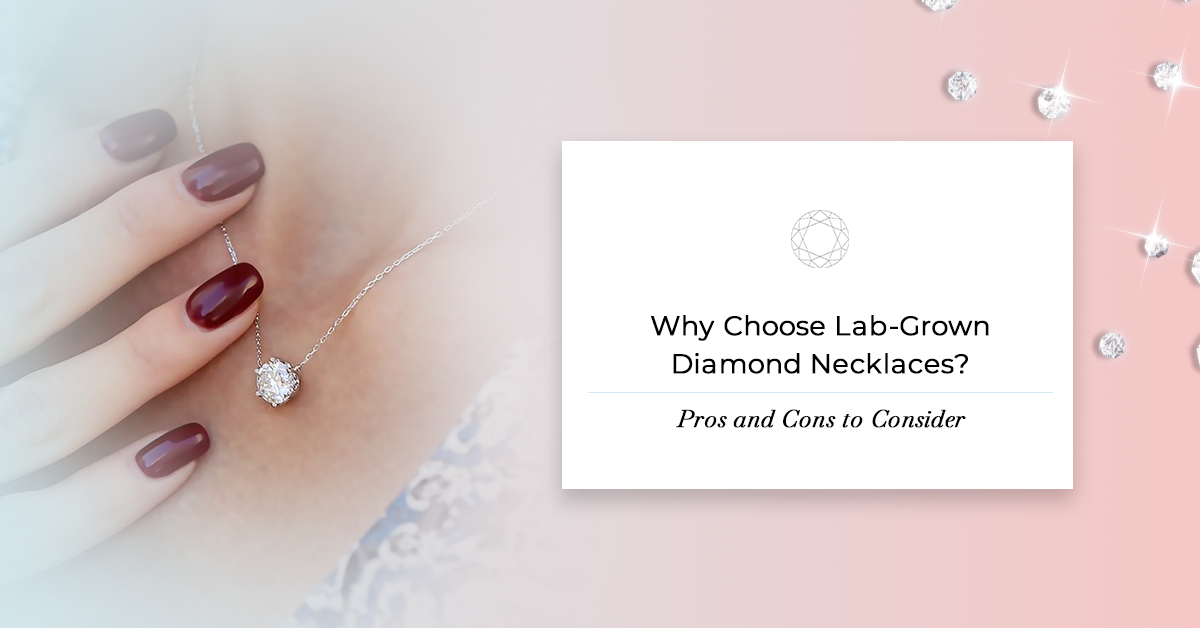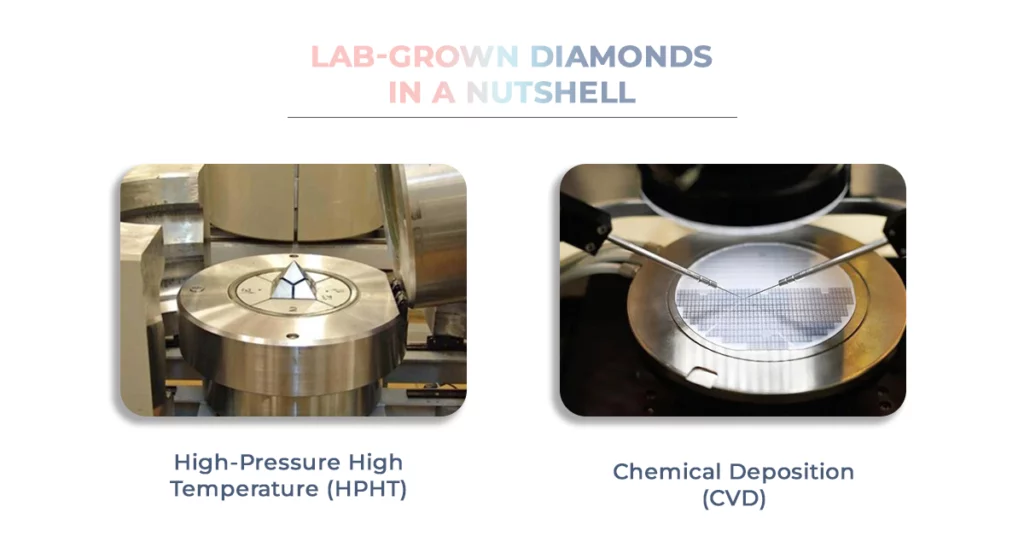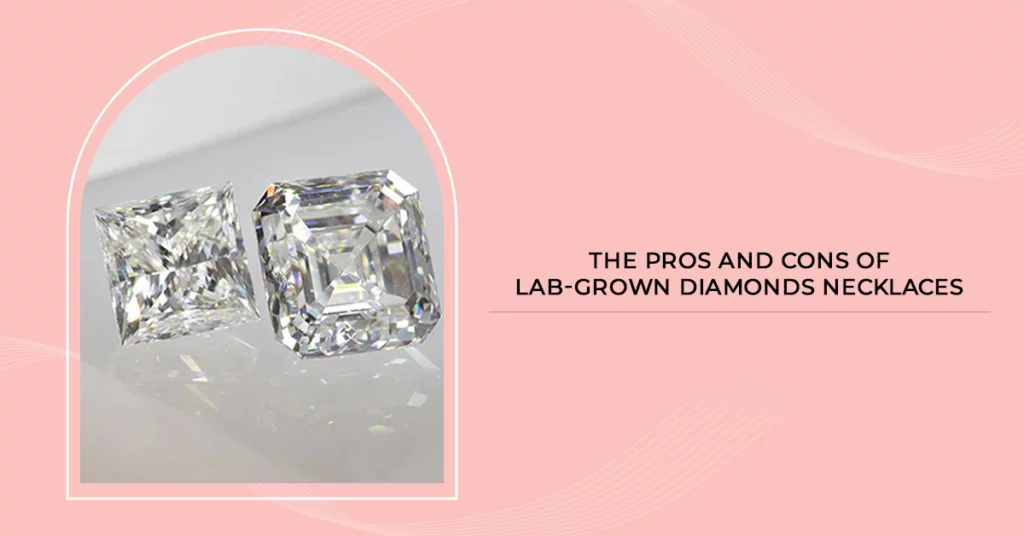
Lab-grown diamonds are not a new concept. In fact, the very first ones (of Gem quality) were manufactured way back in 1954 by General Electric. Today, the lab-grown diamond industry is valued at ~$26.9 billion and is poised to hit $55.6 billion by 2031.
However, there is still a shroud of mystery that surrounds them nearly 70 years later.
Questions like “What are they exactly?”, “How are they different from natural diamonds?” and “Should you even consider them?“ are the first ones that come to mind when this topic comes up.
This blog will lift the shroud of mystery that surrounds lab-grown diamonds. It will cover everything you need to know about them and will shed light on the facts and myths of lab-grown diamonds.

Ask anyone how a diamond is formed, and you will most likely get the same answer, “they are formed as a result of heat and pressure deep within the earth’s surface.” Lab-grown diamonds are made under the same conditions- the only difference being in a laboratory.
Fun Fact: Contrary to popular belief, there are multiple other ways diamonds are formed.
For example, diamonds exist naturally in space, too. They are formed as a result of meteorite impacts, cosmic collisions, and even lightning strikes.
Getting back to earth and lab-grown diamonds, there are two primary manufacturing techniques used to create them:
As the name alludes to, this method replicates the natural conditions of diamond formation by applying extreme heat and pressure to a small piece of a diamond called a “seed.”
In the HPHT process, the seed is placed in a metal capsule along with a carbon-rich source, such as graphite, and then subjected to temperatures of over 1,500 degrees Celsius and pressures of over 5 GPa.
Here, just as under the surface of the earth, the carbon atoms melt and crystallize on the surface of the seed, which is then left to cool to form a diamond as we recognize it.
The Chemical Vapor Deposition (CVD) process is a more recent method of growing lab-grown diamonds. It mimics the formation of diamonds in interstellar gas clouds, where carbon atoms are deposited onto a diamond seed layer by layer.
Here, the diamond seed is placed in a vacuum chamber and exposed to a mixture of carbon-rich gases, such as methane and hydrogen or oxygen. The gases are then heated to a high temperature, which causes them to break down into individual atoms. The carbon atoms then bond to the seed crystal, forming a new layer of diamond.
No matter which process is used, it’s nearly impossible to distinguish them from their naturally occurring cousins.

So, now that we have a good understanding of what lab-grown diamonds are and how they are made, let’s cut to the chase and answer the question at hand:
“Should you choose Lab-Grown Diamond Necklaces?”.
Step out in a beautiful diamond necklace, and you are guaranteed to attract eyes. While no one will be able to tell the difference, here is how you will benefit from adorning a lab-grown diamond necklace.
Lab-grown diamond necklaces are indistinguishable from ones made of embedded natural diamonds to the naked eye. The icing on the cake is that they are nearly 75% – 90% cheaper (sometimes more).
This price difference is due to the fact that you eliminate all of the overhead related to the mining process as well as the supply chain associated with it.
The diamond mining industry is synonymous with corruption, human rights violations, and their environmental impact.
With lab-grown diamond necklaces, you can rest easy knowing that you are not a part of or contributing to this industry in any shape or form.
Want to feel like a million bucks without actually spending a million bucks?
With Lab-grown diamond necklaces, you can own a larger collection of stunning pieces, one for every occasion. However, amidst all the sparkles, there are still a few blemishes that lab-grown diamond necklaces come with.
The Do Not Hold Value
When it comes to investing in jewelry, lab-grown diamond necklaces fall short in one significant aspect: they do not hold value.
With the cost of manufacturing them reducing steadily, their value tends to depreciate quickly once they leave the showroom floor. In short, they are more like a fashion accessory than an investment.
Natural diamonds have been prized for centuries for their beauty, rarity, and provenance. Some have been passed down for generations and hold significant sentimental value, while others have a unique story and history behind them.
In contrast, lab-grown diamond necklaces lack the mystique or romance that natural diamond necklaces do. So, if you are looking for a necklace with a story to tell, lab-grown diamond necklaces are not for you.
Lab-grown diamond necklaces are a great alternative to natural diamond necklaces. They offer the same visual brilliance without the ethical baggage at a fraction of the cost.
But in the end, the choice between the two comes down to what matters the most to you. If you are looking for your next stunning diamond necklace adorned with lab-grown diamonds, check out the collection at La Joya.
Lab-grown diamonds share the exact same physical and chemical properties as natural diamonds do. As a result, they are as durable as natural diamonds.
To the naked eye, even those of trained gemologists, it is impossible to distinguish between lab-grown diamonds and natural diamonds.
Yes, lab-grown diamonds are often certified by gemological laboratories that are reputable. This is done in a similar fashion to natural diamonds to provide information about lab-grown diamond’s quality and characteristics.
Yes, the same 4C’s (carat, color, clarity, and cut) are used to grade lab-grown diamonds. This is because they have the same chemical composition, crystal structure, optical properties, and physical characteristics as natural diamonds.
Lab-grown diamond necklaces can be insured just as those adorned with natural diamonds. All you need is the receipt to prove ownership of the necklace and its certificate to prove its authenticity, the diamond’s characteristics, and its value.
Shop by metal
Shop by diamond
@ All rights reserved La Joya Jewelry Inc